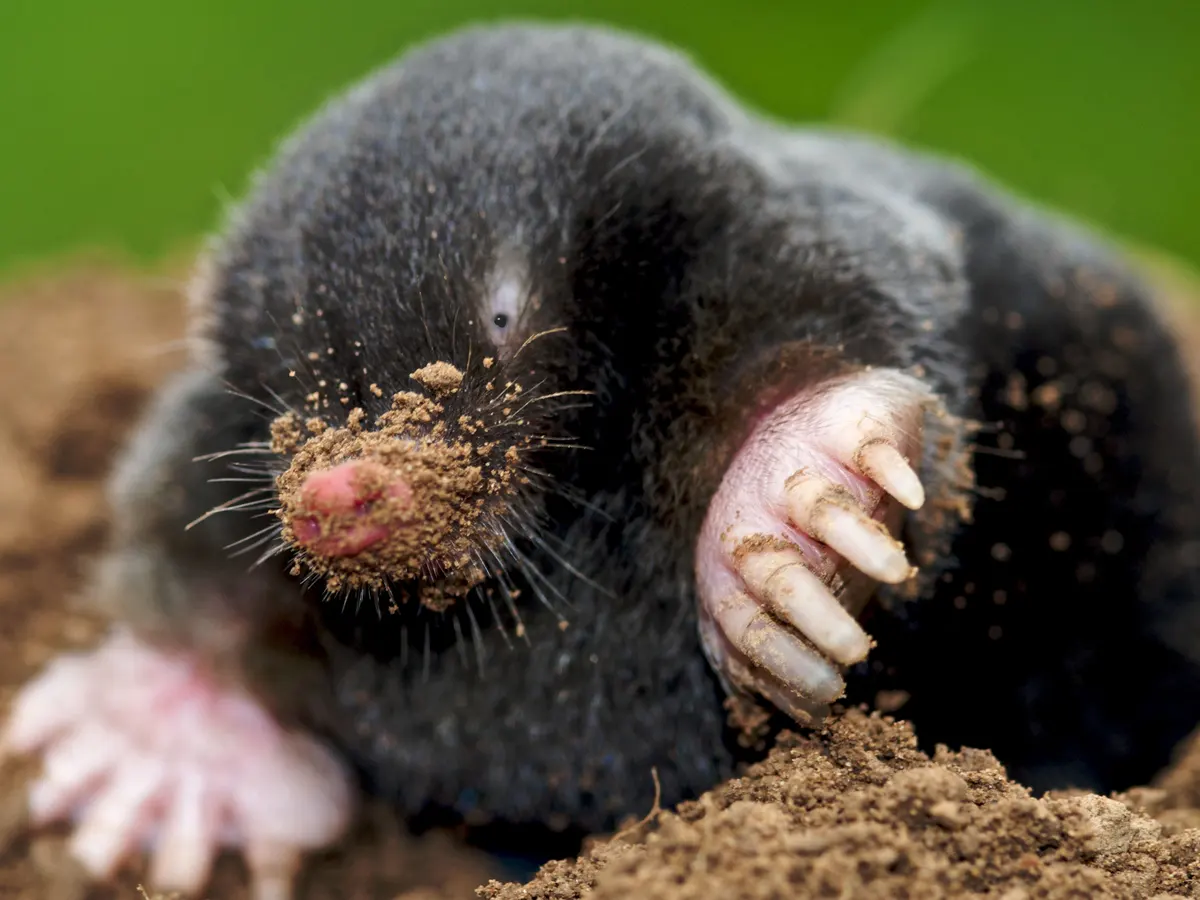Last Updated on January 9, 2024 by Fumipets
Do Moles Make Great Pets? Exploring the Unconventional
Moles, those elusive and enigmatic creatures that live primarily underground, often go unnoticed in the realm of potential pets. While cats, dogs, and rabbits reign as popular choices for animal companions, a select few individuals dare to consider a mole as a unique and unconventional pet. But do moles truly make great pets, or is this idea just a fanciful notion?
In this article, we delve into the world of moles as pets, exploring their suitability, care requirements, and the challenges they pose as non-traditional companions.
Do Moles Make Great Pets?
It’s likely that if you reside in a rural location, you have encountered or at least heard of an animal known as a mole. The charming little mole is seen negatively by gardeners because it damages roots, tramples lawns, and excavates tunnels. However, moles are adorable, intriguing, and entertaining to watch for many animal lovers.
A mole may first seem to be both blind and deaf, as well as adorable as a button. This is due to the fact that, unlike other creatures, a mole doesn’t seem to have any eyes or ears. In actuality, moles do have small eyes and ears that are concealed by their dense covering of fur. Does a mole make a good pet then? The answer is regrettably no. We’ll explain why moles don’t make good pets. We’ll also provide you some fascinating details about moles that we hope you’ll find intriguing.
Why Moles Make Bad Pets
Despite how cute they are, moles shouldn’t be kept as pets. Moles, for one thing, don’t take stress well. A mole might quickly get stressed to death in only a few hours above earth.
The fact that moles dislike interaction is another factor that makes them poor pets. These animals are used to spending the most of their time underground, by themselves, in search of food. Furthermore, given that moles need to feed almost every hour to survive, it would be quite difficult to sate this animal’s insatiable hunger.
A mole may consume as many worms as its body weight each day. It would be quite challenging to locate earthworms every day, even if you were able to maintain a mole’s dish full of them.
Moles are loners that bite when threatened. They are also very possessive and aggressive against other moles of the same sex. This implies that you would never be able to keep two male or two female moles together as pets or handle the moles securely since you would undoubtedly be bitten.
You would need a large yard and the ability to allow your mole to build tunnels if you kept one as a pet. Your yard might very simply and rapidly turn into a complete mess, and your pet mole can find its way to your neighbor’s property and create a lot of damage and ill feelings between the two of you.

Moles are Insectivores
Due to their resemblance to mice and rats, many people mistake moles for rodents. Moles, however, are not at all rodents. Like shrews, hedgehogs, anteaters, and armadillos, they are insectivores, which are a class of mammals that consume insects.
A mole, which is a mammal that is 5 to 7 inches long and highly solitary, seldom ever leaves its network of tunnels. Moles consume a variety of underground creatures, including grubs, ants, and earthworms, although their preferred meal is the latter. Moles use their large, paddle-like front feet to dig tunnels underground where they gather worms.
The mole will scamper to the location and rapidly eat the worm if it burrows and ends up within its tunnel. Moles are renowned for having enormous appetites and devouring food at a breakneck pace. An extraordinary truth about this animal that makes it absolutely remarkable is the fact that a mole can kill and consume an earthworm quicker than a human eye can track.
Moles Hear and Smell Very Well and Dig Holes Like Champs
Moles don’t have great vision, but they have incredible hearing and smell. In addition to being chubby and slow, moles can move quite quickly, digging tunnels through loosened dirt at a startling rate of roughly 20 feet per hour in search of their preferred meal, the common earthworm.
A mole may create a 150-foot-long network of tunnels in a single day. Since moles dig tunnels all year long, they are also not an animal that takes many vacations from their job. A single mole has a very real chance of destroying an average-sized yard in a single day! The majority of gardeners detest moles and will go to great measures to get rid of them because of their capacity to burrow tunnels so fast and effectively.

Conclusion
Moles, although being adorable, are bad pets. Because they don’t want to engage with humans and have strong teeth that may bite painfully, moles really make lousy pets. It is preferable to leave moles alone in the wild so they may do what they do best—create sophisticated tunnel networks to seek and catch prey. Obtain a hamster or gerbil that does well in captivity if you wish to get a little animal to keep as a pet to be on the safe side!
Q&A: The Curious World of Mole Pets
Are moles legal to keep as pets in most areas?
In many regions, moles are protected wildlife, and it is illegal to capture or keep them as pets. Before considering a mole as a pet, thoroughly research your local laws and regulations regarding wildlife ownership. Violating these laws can lead to severe penalties.
Can moles adapt to captivity?
Moles are highly specialized for life underground, with adaptations that enable them to tunnel efficiently and locate their prey. Adapting to a captive environment can be extremely challenging for moles, and many may not survive the transition.
What do moles eat, and how can they be cared for in captivity?
Moles primarily feed on insects, earthworms, and other invertebrates found in the soil. Replicating their natural diet in captivity can be difficult, and providing proper nutrition can be a significant challenge for potential mole owners.
Do moles have social or behavioral characteristics that make them suitable as pets?
Moles are solitary animals and do not exhibit the social behaviors seen in more traditional pets like dogs or cats. They are not known for forming bonds with humans, making them less likely to provide companionship or affection.
What are the ethical considerations of keeping moles as pets?
Keeping moles as pets raises ethical concerns, primarily related to their well-being and conservation. Moles are integral to the ecosystem, and removing them from their natural habitat can disrupt local ecosystems and harm populations. Additionally, their complex needs and specialized adaptations may not be adequately met in captivity, leading to potential suffering.


















